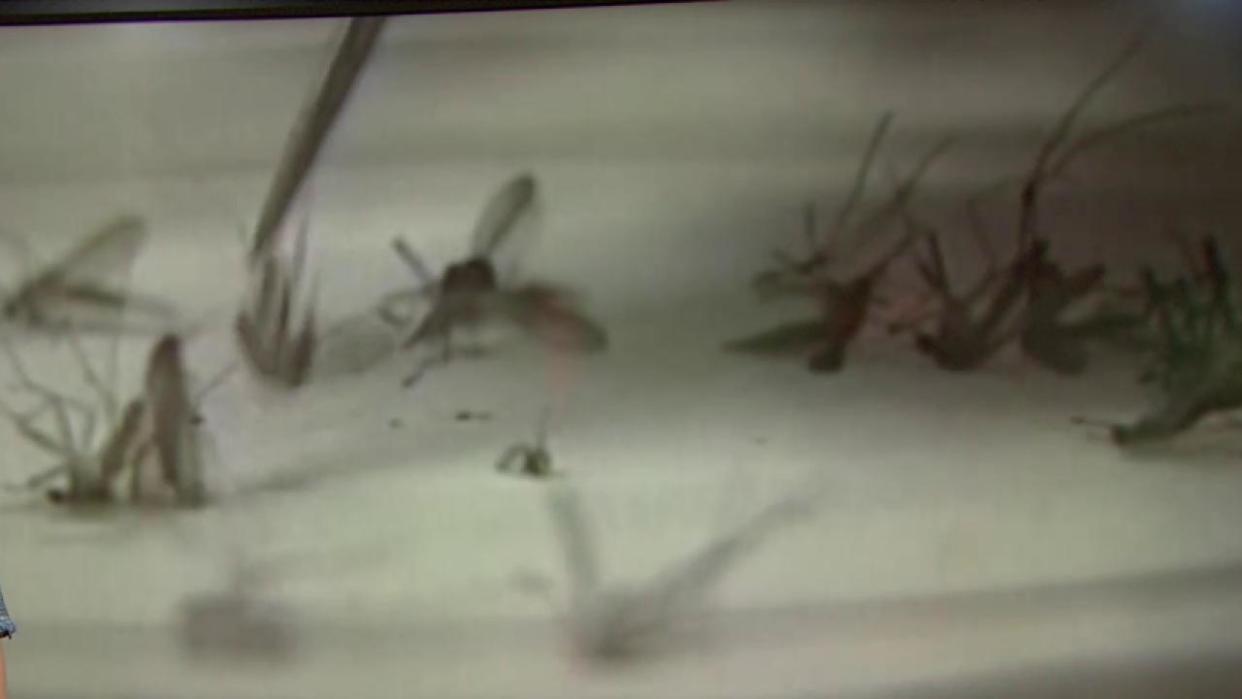Where's Zika most likely in the US? The answer may surprise you

Zika virus is spreading fast across Latin America and the Caribbean, spread by both people and by the Aedes aegypti mosquito. A new study shows where in the U.S. it's most likely to spread, too, and some of the vulnerable cities may be surprising.
New York, Philadelphia and Washington D.C. have a moderate risk, the team at the National Center for Atmospheric Research (NCAR) in Colorado say. That's because the Aedes aegypti mosquitoes can live there and thrive in the hot, humid summers those cities typically enjoy.
Miami, Orlando, Savannah and Charleston are the highest-risk cities — higher even than Houston, the team reports in the Public Library of Science journal PLOS Currents Outbreaks.
Photos related to the Zika virus:
Low-risk cities include dry, high-altitude places such as Denver, Albuquerque and Salt Lake City, even though they're warm in summer.
Related:Leading US Doctors Urge Funding for Zika Fight
"While there is much we still don't know about the dynamics of Zika virus transmission, understanding where the Aedes aegypti mosquito can survive in the U.S. and how its abundance fluctuates seasonally may help guide mosquito control efforts and public health preparedness," NCAR's Andrew Monaghan, who led the study, said in a statement.
"Even if the virus is transmitted here in the continental U.S., a quick response can reduce its impact," added NCAR scientist Mary Hayden, a medical anthropologist who worked on the study.
Zika virus outbreaks:
Two factors are needed for Zika to spread. A human being has to carry the virus in his or her body and the Aedes aegypti mosquitoes need to be on hand to carry it to others. The virus can also be sexually transmitted, but that results in less spread, the Centers for Disease Control and Prevention says.
Experts almost all agree that Zika is unlikely to spread much in the U.S., in part because the Aedes aegypti mosquito isn't common except in parts of the far south and Hawaii, and also because Americans mostly live indoors, with air conditioning and little chance for the mosquitoes to live and breed inside homes.
They've predicted small, localized outbreaks come summer.
This is based on past history. The CDC and other federal agencies have already said they're looking to see where and how other viruses carried by Aedes mosquitoes spread in the U.S. Those include chikungunya and dengue virus.
Related:Study Finds Zika Damages Babies at All Stages of Pregnancy
Monaghan's team took these factors into account, as well as data on travelers from affected regions that would coincide with the hot summer months when mosquitoes thrive.
"Meteorological conditions are largely unsuitable for Aedes aegypti over the U.S. during winter months (December-March), except in southern Florida and south Texas where comparatively warm conditions can sustain low-to-moderate potential mosquito abundance," Monaghan's team wrote.
CDC says 30 million to 40 million Americans fly to Latin America and the Caribbean every year and even more go by land.
"We chose 50 U.S. cities within and near the known range of Aedes aegypti," Monaghan's team wrote.
"These cities were selected because they may be meteorologically suitable for Aedes aegypti for at least part of the year, though not all have recorded the presence of Aedes aegypti to date."
They also calculated whether people had water in containers handy for the mosquitoes to breed. Aedes mosquitoes can breed in very small containers and are notorious for making their homes in and around where people live.
"There is strong evidence that Aedes aegypti eggs are capable of surviving even in harsh winter conditions as a result of being laid in favorable cryptic environments such as subterranean habitats," the team noted.
"Poverty has been linked to a number of indicators of elevated exposure to mosquitoes such as lower usage rates of air conditioning and less efficient cooling options."
Based on all this, there's not much risk of Aedes-transmitted disease anywhere but south Florida and Texas in winter.
"By mid-July, all 50 cities are meteorologically suitable for Aedes aegypti, with far southeastern cities being suitable for high abundance, and other eastern cities being suitable for moderate-to-high abundance," the team added.
What happens if Zika can be spread by other Aedes mosquitoes, such as Aedes albopictus, aka the Asian tiger mosquito? Then all bets are off — those mosquitoes can survive in much colder climates, the researchers say.
More from NBC News:
Trump Warns of Riots If He Doesn't Get GOP Nomination
Paul Ryan Won't Accept GOP Nod at Contested Convention
5 Deputies Disciplined for Inaction in Trump Rally Punch
